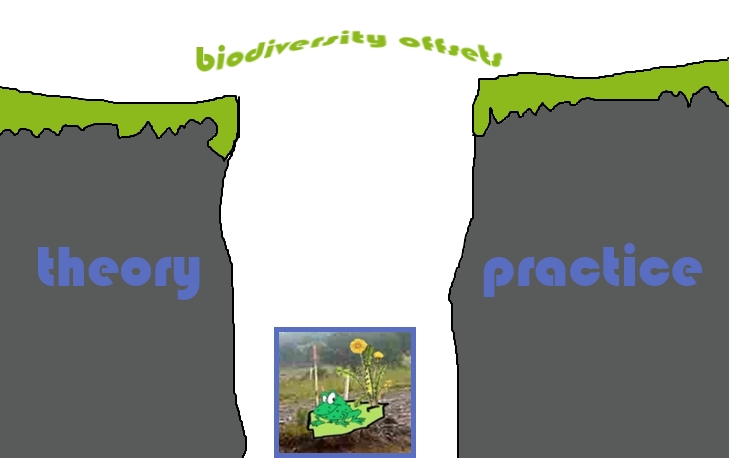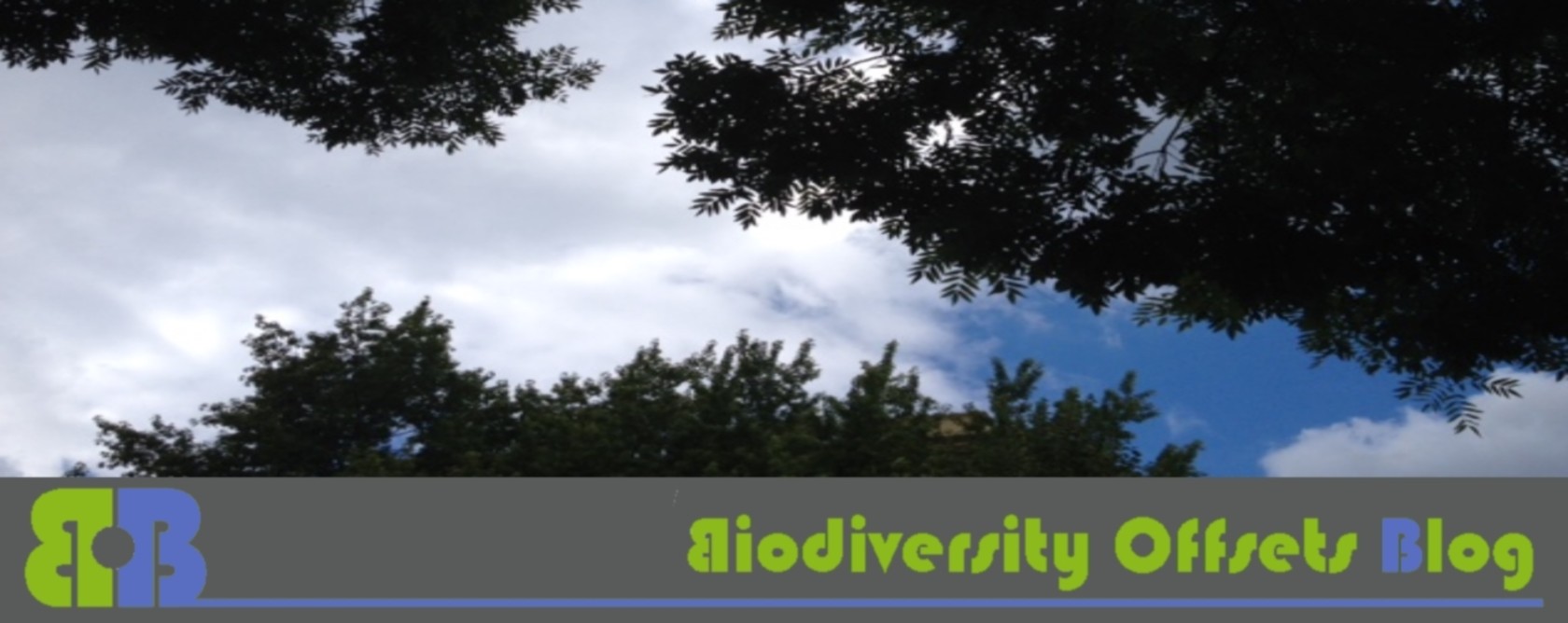This is a guest post by Alan Key from Australian consultancy Earthtrade. This comment is the expression of the author’s thoughts and experiences and such is acknowledged as a fruitful contribution to the discussion on biodiversity offsets. If you want to react or clarify your own position (underpin or disprove Alan’s reasoning), please leave a reply below!
 The main problems that I see (note that we have just started our 53rd project) is that there is a disjunct between theory and practice.
The main problems that I see (note that we have just started our 53rd project) is that there is a disjunct between theory and practice.
Regardless of what we want to occur, the offset has to make commercial sense or management will falter and the environmental outcomes compromised.
Commercial sense of biodiversity offsets
I apologise if this offends — but it is a pragmatic fact. SO, when we design offsets — they have to be designed from the technical objectives and also from the commercial, financial and legal perspective.
Therefore, as with any commercial activity, it comes down to scale. It is more financially and legally feasible although more difficult, to design offsets that have a commercial scale. The scale will be dependent on the country, environmental constraints, environmental factors, economics, social and geography etc. The difficulty sometimes lies within the ability of the legislative and policy framework to be able to deal with these factors.
Evolution of biodiversity offsets over time
Another point is the progression of the offset over time. Let us consider the “evolution” of an offset. First we have the pioneer species which colonize the site, then we progress through various stages of the offsets maturity. During each stage, the offset will meet the needs of different species and different environmental services will be delivered. So these need to be considered and designed within the offset from the outset. As an example — when you first replant trees in an area — they will sequester carbon — hence a carbon offset. After a time –they will become forage or habitat for other species — in Australia — possibly the Koala. Some years after that — the sub canopy and or ground layer will establish and provide habitat for other species.
This “evolution” in the offset needs to be considered and accounted for in the design stage and therefore the financial and commercial factors of the value of the offsets progressively can be considered. This then makes the offset financially and commercially viable overcoming some of the problems of the permanency of offsets and the financial sustainability of these areas.
Seeking a comprehensive and pragmatic approach to biodiversity offsets
I apologise if this is offensive or I have not expressed myself clearly — it is a difficult area trying to deliver a commercial outcome within and environmental area within legislative and policy restrictions. BUT, it can be done if we address the issue from a comprehensive and pragmatic approach addressing the environment, financial and legal perspective.

Alan, you have asked for my thoughts on this — I do appreciate your contribution which is seemingly based on extensive experience and therefore very much true in the cases you have seen.
However, from an idealistic point of view which I still kind of can’t let go, it is sad to acknowledge that “commercial sense” might be an important shaping factor of a biodiversity offset. From a nature conservation point of view this is actually kind of absurd: the restoration activities intended to counterbalance the negative outcomes from commercial activities should themselves make commercial sense — where’s the benefit to the destroyed nature?
But of course, as an offset provider you need to take a pragmatic way as you say and consider what is working. And we have seen many offsets fail. So to me, any reasoning that helps to deliver viable biodiversity offsets (that deliver an additional benefit for nature) is a good one.
The evolution of biodiversity offsets over time is a crucial point which has both a positive (that you have pointed to) and a negative side of the coin: offsets can evolve over time, but they also need to be secured in perpetuity and also not sold several times for the same efforts.
I do strongly agree with you that such a complex and tricky (some would even call it dangerous) issue as biodiversity offsets is highly context-dependent and needs very specific and maybe also pragmatic ways to approach it. Yet, we should at any cost prevent that pragmatic means having the most simple at the least cost with the lousiest outcome for nature!